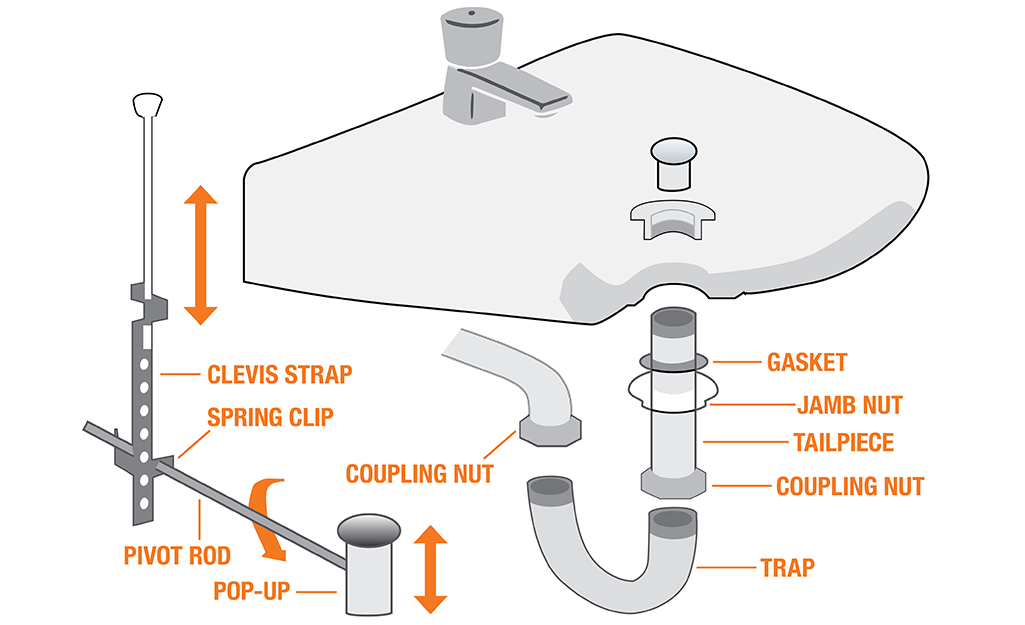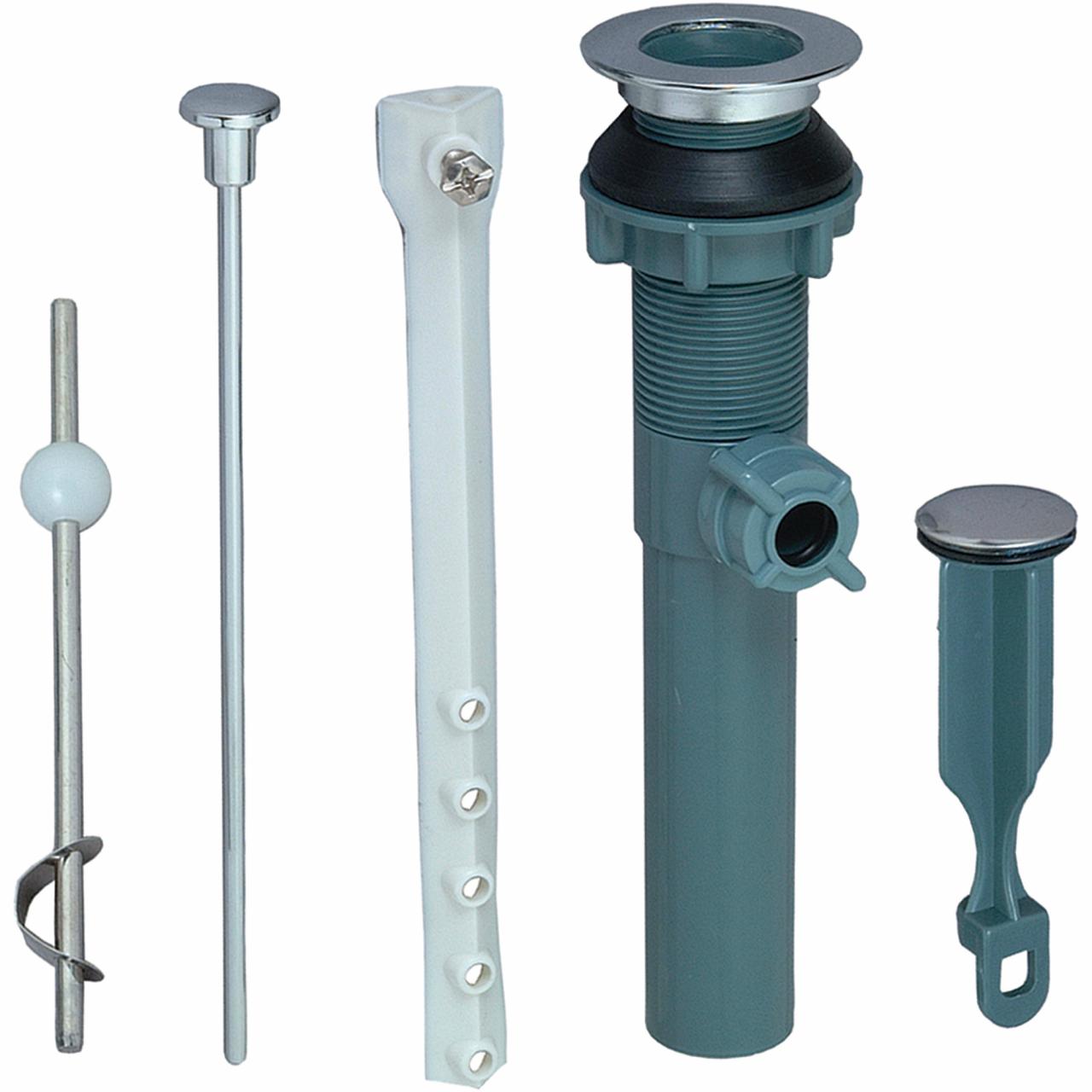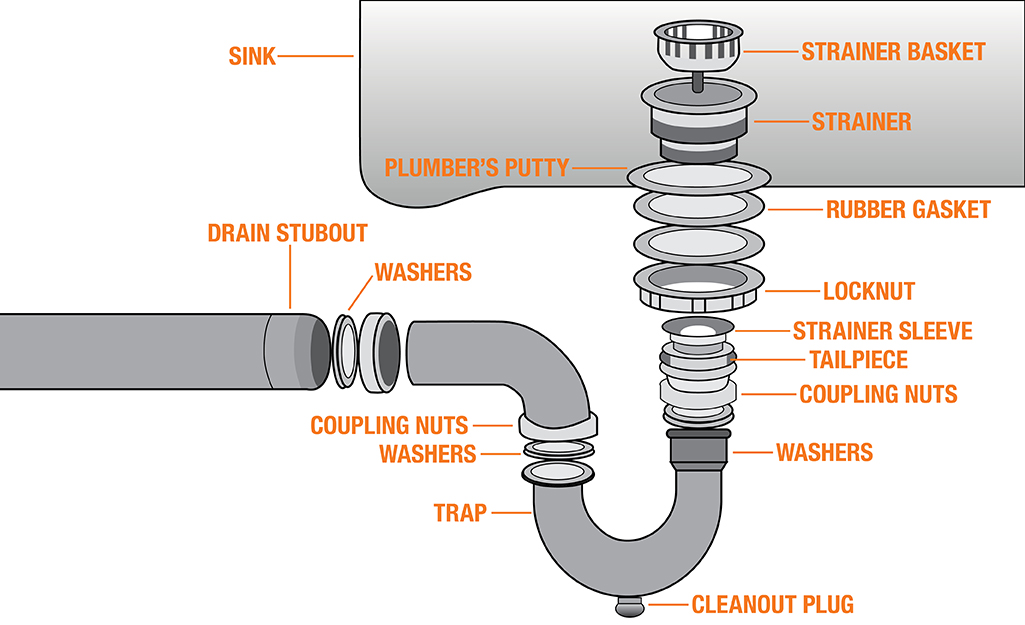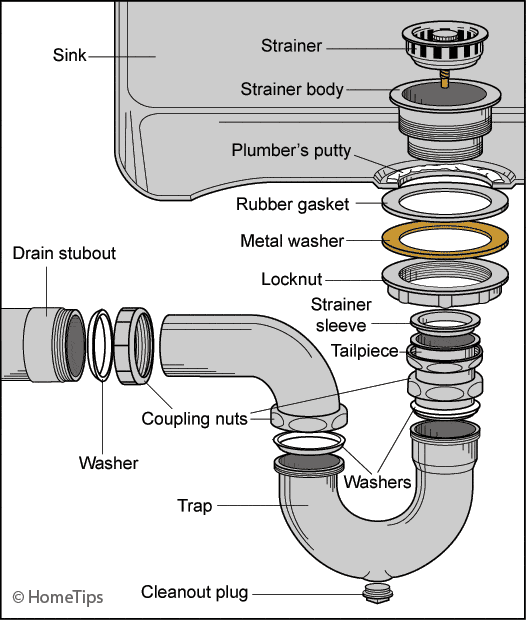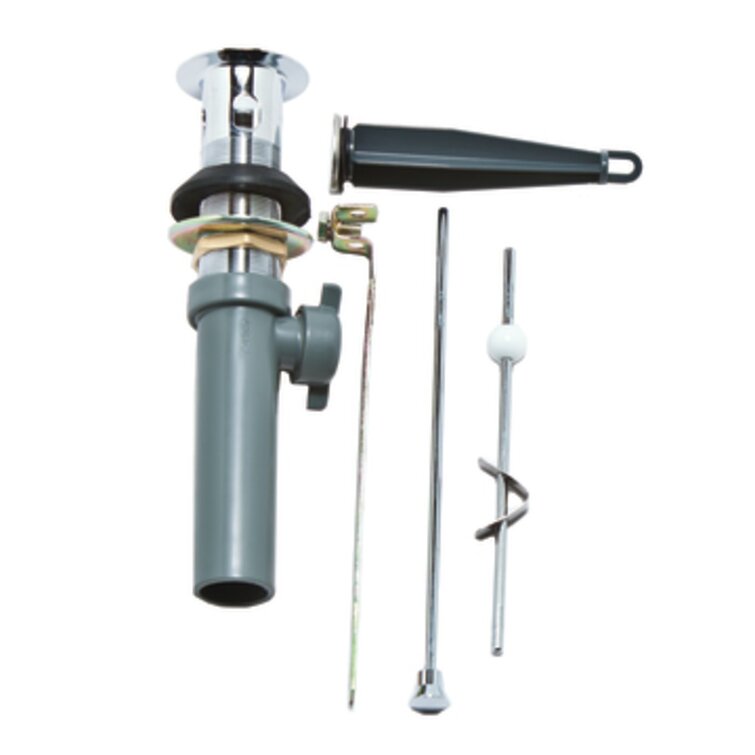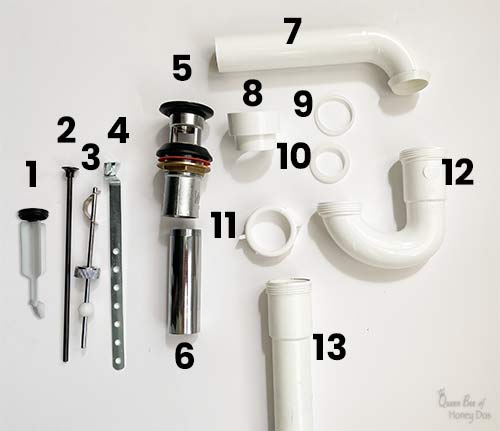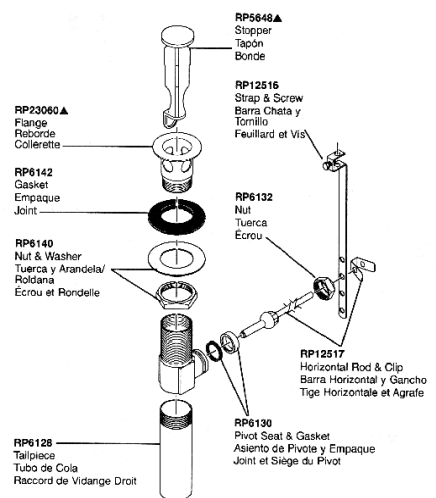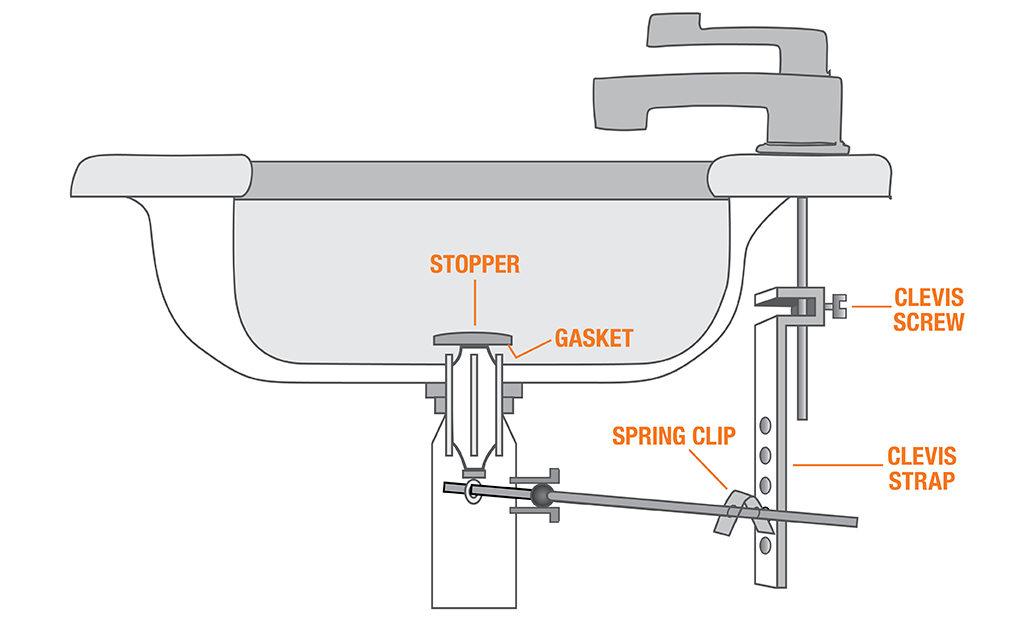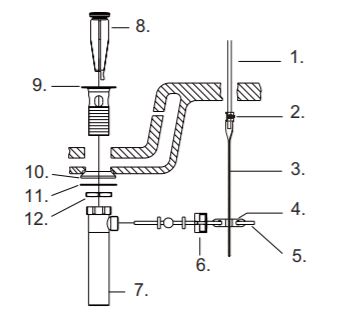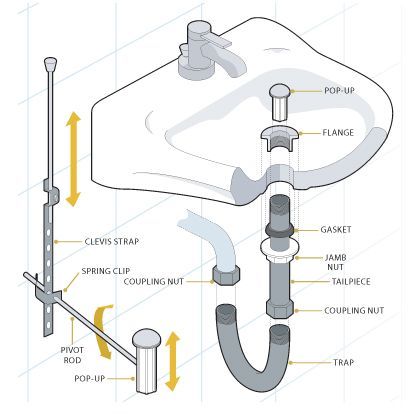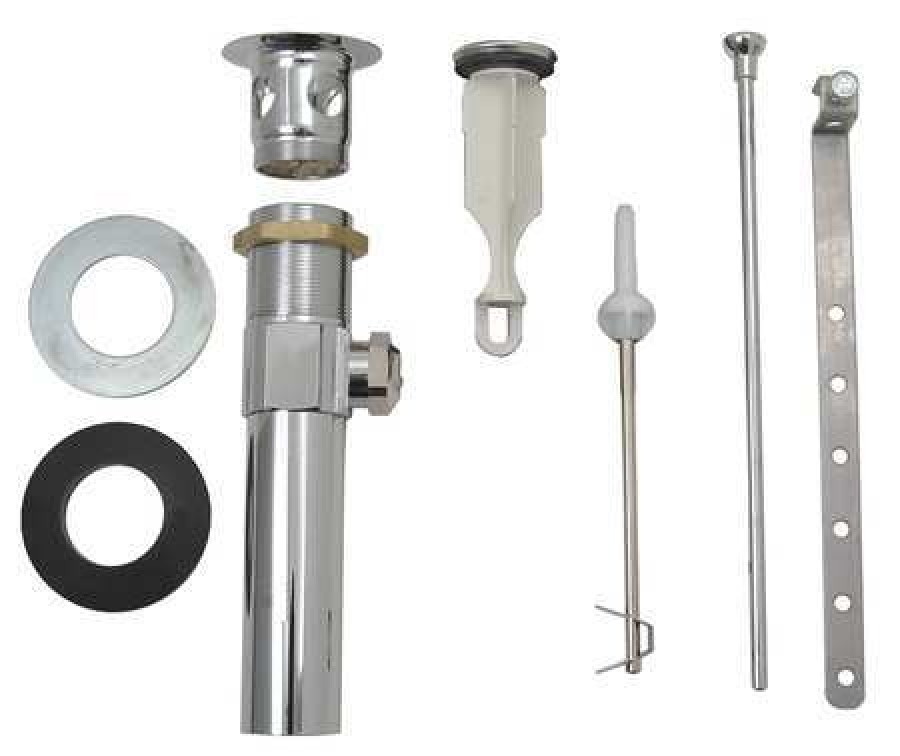Understanding the Anatomy of a Bathroom Faucet Drain
When it comes to understanding the anatomy of a bathroom faucet drain, it’s essential to familiarize yourself with the various components that make up this essential plumbing fixture. By knowing the different parts, you’ll be better equipped to troubleshoot issues and make informed decisions when it comes to repairs or replacements.
- Drain Stopper: The drain stopper is a crucial component of the bathroom faucet drain. It is responsible for blocking or allowing water to flow down the drain. There are various types of drain stoppers, including lift and turn, pop-up, and push-button.
- Drain Flange: The drain flange is the visible part of the drain that sits on top of the sink or basin. It provides a secure connection between the drain and the sink, preventing leaks. Drain flanges come in different finishes and styles to match your bathroom decor.
- P-Trap: The P-trap is a curved pipe that traps water, preventing sewer gases from entering your bathroom. It is named after its shape, resembling the letter “P.” The P-trap is located beneath the sink and connects the drain to the main plumbing system.
- Tailpiece: The tailpiece is a straight pipe that connects the drain flange to the P-trap. It is usually made of metal or plastic and can be adjusted in length to fit different sink heights.
- Gaskets and O-rings: Gaskets and O-rings are essential for creating a watertight seal between the different components of the bathroom faucet drain. They prevent leaks and ensure proper functionality. Regular inspection and replacement of these rubber seals are necessary to maintain the integrity of the drain system.
- Drain Pipe: The drain pipe carries the wastewater from the drain to the main sewer line or septic system. It is typically made of PVC or metal and should be properly aligned and connected to ensure efficient drainage.
Exploring the Different Types of Bathroom Faucet Drain Parts
When it comes to bathroom faucet drain parts, there are several types available on the market. Each type has its own unique features and advantages. Let’s explore some of the most common types of bathroom faucet drain parts:
Lift and Turn Drain: The lift and turn drain is a popular choice for bathroom sinks. It features a stopper that can be lifted and turned to open or close the drain. This type of drain offers a simple and reliable mechanism for controlling water flow.
Pop-Up Drain: The pop-up drain is another commonly used type of bathroom faucet drain. It is operated by a lever or a push button, which activates a rod that raises or lowers the stopper. Pop-up drains are known for their ease of use and sleek design.
Push Button Drain: The push button drain is a modern and convenient option for bathroom sinks. It features a button that, when pressed, raises or lowers the stopper. This type of drain offers a seamless and hygienic solution, as it eliminates the need for touching the drain stopper directly.
Grid Drain: The grid drain is a minimalist and functional option for bathroom faucets. It consists of a flat grid or perforated strainer that allows water to flow freely while catching debris. Grid drains are easy to clean and maintain, making them a popular choice for contemporary bathrooms.
Pop-Up Rod and Linkage Assembly: This type of drain operates using a rod and linkage mechanism. When the rod is pulled or pushed, it raises or lowers the stopper. Pop-up rod and linkage assemblies are commonly used in older style bathroom faucets and can be found in various finishes and styles.
Overflow Drain: An overflow drain is a feature commonly found in bathroom sinks, especially those with deep basins. It prevents water from overflowing if the sink is accidentally left running. It typically consists of a small opening near the top of the sink that connects to the drain pipe.
Troubleshooting Common Issues with Bathroom Faucet Drain Parts
Dealing with issues related to your bathroom faucet drain can be frustrating. However, many common problems can be resolved with a few simple troubleshooting steps. Here are some common issues you may encounter with bathroom faucet drain parts and how to address them:
Slow Drainage: If water is draining slowly from your sink, there may be a clog in the drain. Start by removing any visible debris or hair from the drain stopper or drain flange. If the problem persists, use a plunger or a drain snake to dislodge the clog. You can also try using a mixture of baking soda and vinegar to dissolve the blockage.
Leaks: Leaks can occur at various points along the bathroom faucet drain. Check for loose connections between the drain flange, tailpiece, and P-trap. Tighten any loose nuts or replace worn-out gaskets. If the leak persists, you may need to replace damaged components or seek professional help.
Stuck or Jammed Drain Stopper: If your drain stopper is stuck or not operating correctly, it may need some maintenance. Start by removing the drain stopper and cleaning it thoroughly. Lubricate the moving parts with silicone grease and reinstall the stopper. If the problem persists, you may need to replace the stopper assembly.
Foul Odors: If you notice unpleasant odors coming from your bathroom faucet drain, it may be due to a buildup of bacteria or debris in the drain pipe or P-trap. Clean the drain using a mixture of baking soda and vinegar or a commercial drain cleaner. Regularly flushing the drain with hot water can also help prevent odor buildup.
Rust or Corrosion: Over time, bathroom faucet drain parts can develop rust or corrosion, especially in areas with hard water. Use a mild abrasive cleaner or vinegar to remove surface rust. For more severe cases, consider replacing the affected components with new ones that are resistant to rust and corrosion.
How to Replace and Repair Bathroom Faucet Drain Parts
Replacing or repairing bathroom faucet drain parts may seem like a daunting task, but with the right tools and techniques, it can be a manageable DIY project. Here’s a step-by-step guide on how to replace and repair common bathroom faucet drain parts:
Gather the Necessary Tools: Before starting any repair or replacement work, gather the tools you’ll need. This may include a wrench, pliers, screwdriver, plumber’s tape, and silicone grease. Having all the necessary tools on hand will make the process smoother.
Turn off the Water Supply: Before working on the drain, it’s essential to turn off the water supply to avoid any leaks or flooding. Locate the shut-off valves under the sink and turn them clockwise until they are fully closed.
Remove the Drain Stopper: Different types of drain stoppers may require different removal methods. For lift and turn and pop-up drains, you may need to unscrew or lift the stopper to remove it. For push-button drains, there may be a release mechanism that allows you to detach the stopper. Follow the manufacturer’s instructions or consult a plumbing guide for specific removal steps.
Disconnect the Drain Flange: To replace the drain flange or other components, you’ll need to disconnect them from the sink. Use a wrench or pliers to loosen and remove any nuts or connectors that secure the drain flange to the sink.
Replace or Repair the Components: Once the old components are removed, inspect them for any damage. Replace any worn-out or corroded parts with new ones of the same type and size. Apply plumber’s tape to the threads of any connections to ensure a secure and watertight seal.
Reassemble and Test: Once all the necessary repairs or replacements have been made, reassemble the drain components in the reverse order of disassembly. Tighten any nuts or connectors securely but avoid over-tightening, as this can cause damage. Turn on the water supply and test for any leaks or issues. If everything is working correctly, you’ve successfully replaced or repaired your bathroom faucet drain parts.
Choosing the Right Bathroom Faucet Drain Parts
When it comes to choosing the right bathroom faucet drain parts, there are several factors to consider. From functionality to style, selecting the appropriate components can enhance both the performance and aesthetics of your bathroom. Here are some key considerations to keep in mind:
Type of Drain: Consider the type of drain that best suits your needs and preferences. Whether it’s a lift and turn, pop-up, or push button, choose a mechanism that is easy to use and aligns with your desired functionality.
Material and Finish: Bathroom faucet drain parts come in various materials and finishes, including stainless steel, brass, and chrome. Consider the overall style of your bathroom, as well as the durability and maintenance requirements of different materials.
Compatibility: Ensure that the drain parts you choose are compatible with your sink or basin. Take measurements and consult the manufacturer’s specifications to ensure a proper fit.
Water Efficiency: If water conservation is a priority for you, consider choosing drain parts that are designed to be water-efficient. Look for features such as adjustable flow rates or aerators that reduce water consumption without compromising performance.
Budget: Set a budget for your bathroom faucet drain parts and stick to it. Compare prices from different manufacturers and retailers to find the best value for your money. Remember, quality and durability should also be taken into account when making your decision.
Brand Reputation: Research the reputation and reviews of different brands before making a purchase. Opt for reputable brands that are known for producing high-quality and reliable bathroom faucet drain parts.
How To Install Bathroom Sink Drain
Bathroom Sink Popup and Stopper Problems
Parts of a Sink
How To Install A Lavatory Faucet Pop Up Drain Assembly
Bathroom Sink Plumbing Diagram DIY Pinterest Sinks Bathroom sink
Delta Metal Pop-Up Drain Assembly for Bathroom Sinks in Chrome
Related Posts:
- Antique Pewter Bathroom Faucets
- Best Widespread Bathroom Faucet
- Antique Porcelain Bathroom Faucets
- Chrome Or Brushed Nickel For Bathroom Faucets
- How To Replace Cartridge In Delta Bathroom Faucet
- Bathroom Faucet Assembly Diagram
- Remove Aerator Delta Bathroom Faucet
- Black Bathroom Faucets
- Best Waterfall Bathroom Faucets
- Chateau By Moen Bathroom Faucet Repair
